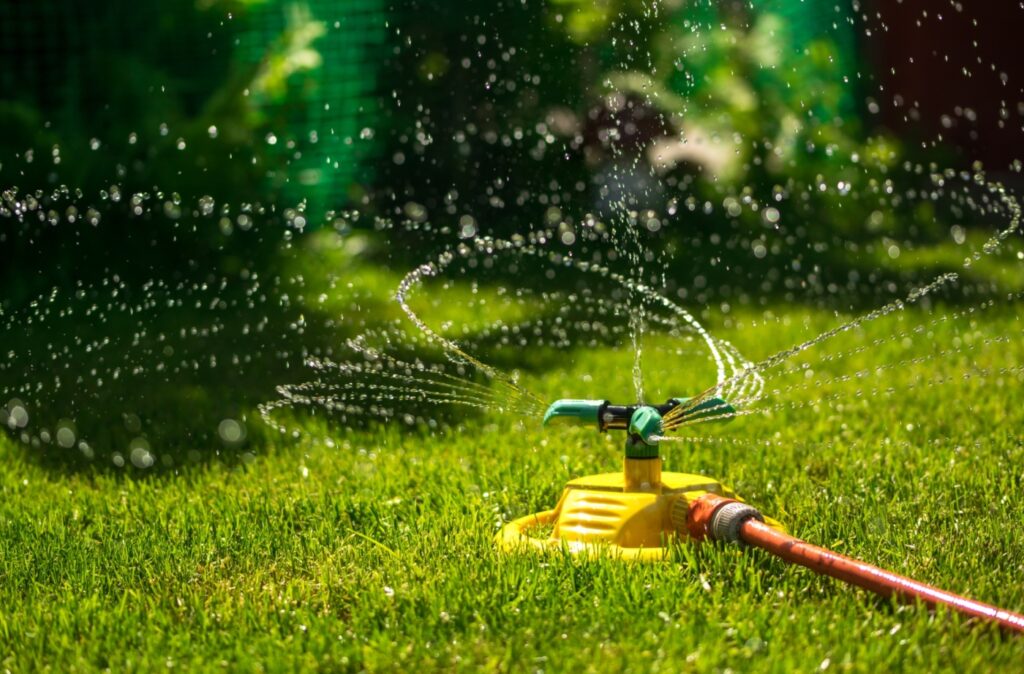
Q. What tips do you have for spring lawn maintenance? Are there some things I can do to decrease my water usage without getting rid of my grass?
Mowing your grass with the lawnmower set on the highest setting is one of the most helpful things you can do to keep your lawn healthy. The longer blades shade the ground, which decreases the amount of surface evaporation. This means that less of that expensive water is being lost to evaporation and more of it can reach the deep grass roots. It also allows the grass to out-compete emerging weeds.
Mow more frequently, so you’re not removing too much length at a time. By removing less grass more often, the turf will be less stressed. Less stress means that the grass will put more energy into growing a deeper and more extensive root system, which comes in handy when the heat waves of summer arrive.
Early spring is a good time to sharpen or replace your lawnmower blade. A dull blade is going to mangle the grass and may create more work if you have to re-mow those shaggy spots.
Inspect your irrigation system for mis-aimed or clogged sprinkler heads. Persistent brown spots are usually caused by incomplete sprinkler coverage. Take time to observe a complete sprinkler cycle to ensure that you’re not watering the sidewalk!
Q. Every year my Camilla bush blooms beautifully, but partway through the blooming season the buds start to get brown, flowers drop off and some buds never develop. I’ve picked the flowers that drop off the ground, but this continues to happen. Any information to help clear up this issue would be much appreciated.
Your photos show that the browning appears to be limited to the flowers and that the leaves look healthy. In this case, I suspect that your camellias are suffering from petal blight. This is a common fungal disease that causes flowers to brown and fall off.
Camellia petal blight will appear during periods of high humidity when the temperature is between 50 and 70F. Not all flowers are affected, and the pattern of infection seems to be randomly distributed.
Salt damage and cold injury can cause similar symptoms, but the browning is a bit different. Salt damage will affect leaves, causing browning on leaf tips as well as flower damage. Cold injury will show up all over the plant, or possibly on only an exposed side.
Continue to remove and dispose of any affected flowers, including removal of flowers that are still on the plant. This will prevent reinfection or spread of the fungal spores. Thick mulch (4 inches) can prevent fallen spores from reaching the flowers. Annual application of the antifungal PCNB (pentachloronitrobenzene or Quintozene) to the surrounding ground can prevent germination of the sclerotia (spores). The antifungal spray thiophanate-methyl applied directly to the flowers as they open can protect from infection, but this can be labor-intensive because the spraying has to be done frequently as new flowers appear.
Have questions? Email gardening@scng.com.
Looking for more gardening tips? Here’s how to contact the Master Gardener program in your area.
Los Angeles County
mglosangeleshelpline@ucdavis.edu; 626-586-1988; http://celosangeles.ucanr.edu/UC_Master_Gardener_Program/
Orange County
ucceocmghotline@ucanr.edu; 949-809-9760; http://mgorange.ucanr.edu/
Riverside County
anrmgriverside@ucanr.edu; 951-683-6491 ext. 231; https://ucanr.edu/sites/RiversideMG/
San Bernardino County
mgsanbern@ucanr.edu; 909-387-2182; http://mgsb.ucanr.edu/
Related Articles
Ferns, roses and sweet potatoes: Things to do in the garden this week
Papayas, persimmons and figs: Tips for trees in your garden
Gardening: How to shop wisely when buying seedlings or ‘starts’
Watering, fertilizing and those spider mites: Things to do in the garden this week
How to help avocado trees that are losing leaves
